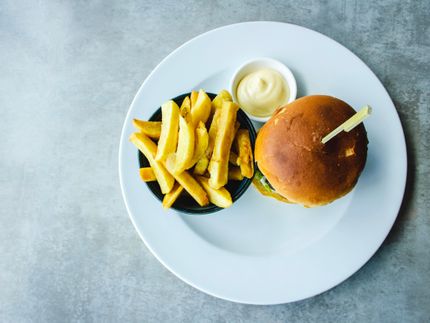How the gut ‘talks’ to brown fat
The long known gut hormone secretin has a newly discovered, additional function: It activates thermogenesis in brown fat, which triggers saturation. Scientists of the Technical University of Munich (TUM) in collaboration with an international team have succeeded in this important step.
Only a few weeks ago it was proven that brown fat is just as strongly activated by a meal as by cold. Now, the same team, led by Professor Martin Klingenspor, Head of the Chair for Molecular Nutritional Medicine at Else Kröner-Fresenius Center (EKFZ) at TU Munich, in collaboration with Finnish researchers, has elucidated the physiological mechanism of this activation.
"We surprisingly identified secretin as the decisive factor," reports Professor Martin Klingenspor. Secretin is a intestinal hormone that has been known for a long time. Previously, nutritional medicine assumed that this peptide hormone essentially controlled gastrointestinal functions. This is, for example, to stimulate the secretion of water and bicarbonate from the pancreas as soon as the acidified stomach content passes into the small intestine. In addition, secretin is supposed to promote the feeling of fullness (satiation) in the brain. So far the state of knowledge until recently.
Secretin triggers energy expenditure
Applying molecular biology techniques (transcriptome sequencing), the study found that the secretin receptor is also expressed in brown adipose tissue. "Stimulation of this receptor with secretin led to an immediate activation of non-shivering thermogenesis in brown adipocytes." explained the expert.
Communication between brown fat and the brain
Non-shivering thermogenesis is the mechanism of heat production characteristic for brown adipose tissue, but it does not just dissipate energy. The study specifically revealed that non-shivering thermogenesis is also the prerequisite for the brain to signal satiation. This requires communication between the brown fat and the brain, with three possible routes:
1. A rise in brain temperature
2. nerves transmitting information from brown fat to brain, or
3. special endocrine mediators secreted by brown adipose tissue, known as BATokines.
Professor Martin Klingenspor sees heat formation itself as the most plausible possibility at present: "Thermogenesis in brown fat leads to blood warming and a slight increase in the temperature of the brain; this activates neurons that signal satiation.”
Brown fat plays key role in satiation
Based on these findings, the previous view that secretin directly acts on specific neurons in the brain, thereby leading to a feeling of satiation and dampening the feeling of hunger, has to be revised. "Brown adipose tissue can be regarded as a relay station in between gut and brain," said the expert, summarizing the findings. The newly established communication line between gut and brain is initiated by secretin release during a meal, followed by secretin-induced thermogenesis in brown fat, and a rise in brain temperature that triggers satiation. Thereby, meal-associated thermogenesis in brown fat dissipates energy and promotes meal termination. — both crucial factors for the therapy and prevention of the global obesity epidemic.
Naturally stimulate secretin release and feel full faster
Would secretin be the right "medicine" in this context? "No," clarifies Klingenspor. This is because a permanent stimulation of the pancreas would be unfavorable. However, he sees a potential in the natural stimulation of secretin production via certain foods. "The right starter before a meal could make people feel full faster and thereby reduce the total amount of calories consumed." The question of which nutrients could fall under this category will be the subject of further studies.
Original publication
Yongguo Li*, Katharina Schnabl*, Sarah-Madeleine Gabler, Monja Willershäuser, Josefine Reber, Angelos Karlas, Sanna Laurila, Minna Lahesmaa, Mueez u Din, Andrea Bast-Habersbrunner, Kirsi A. Virtanen, Tobias Fromme, Florian Bolze, Libbey S. O’Farrell, Jorge Alsina-Fernandez, Tamer Coskun, Vasilis Ntziachristos, Pirjo Nuutila, and Martin Klingenspor; "Secretin-Activated Brown Fat Mediates Prandial Thermogenesis to Induce Satiation"; Cell; 11/2018. *equal contribution



















































